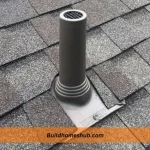When it comes to ensuring the safety and functionality of your furnace, choosing the right breaker size is crucial. If you’ve recently invested in a 20 KW furnace or are considering one, you might be pondering over this very question: “What size breaker do I need?” It’s essential to get it right, as the correct breaker size protects your furnace and maintains consistent performance.
In this post, we’ll talk about the specifics of breaker sizes, helping you find the perfect match for your 20 KW furnace.
What Size Breaker Do I Need for A 20 KW Furnace
For a 20 KW furnace, you’ll typically need an 83.3-amp breaker when operating at 240 volts. To calculate this, divide the power (20,000 watts or 20 KW) by the voltage (typically 240 volts for such appliances in the U.S.). However, electrical codes often require circuits to be sized at 125% of their continuous load. Therefore, 83.3 amps multiplied by 1.25 equals approximately 104 amps.
Given this, you’d choose the next standard breaker size up, which is usually a 110-amp breaker. This ensures that the breaker can handle the furnace’s operational load without frequently tripping while also offering an added layer of safety. Always consult with an electrician or local electrical codes to confirm the correct size for your specific installation.
Sizing Your Electric Furnace
When in the market for an electric furnace, it’s essential to ascertain the British thermal unit (BTU) output you’ll need to adequately warm your home. Electric furnaces typically come in increments of 10,000 to 15,000 BTUs. Here’s a rule of thumb: estimate 25 to 30 BTUs per square foot in temperate areas. You’re looking at 35 to 40 BTUs per square foot for chillier regions.
In particularly frigid zones, factor in 45 BTUs for every square foot. So, if you live in a colder region and have a home spanning 2,500 square feet, you’d need a furnace ranging from 75,000 to 100,000 BTUs. By nailing down the right BTU count, you can be confident in selecting an electric furnace of the appropriate size, paired with a sufficiently robust breaker to meet its electrical demands.
Factors Influencing Breaker Size
1. Furnace Efficiency
Modern electric furnaces often come with efficiency features, such as variable-speed blowers and multi-stage heating processes, that can influence their electrical demands. High-efficiency furnaces might require less power during regular operation but might have occasional spikes in demand. Understanding these operational nuances is crucial to select an appropriately sized breaker.
2. Home Insulation
The level and quality of insulation in your home can influence how hard your furnace needs to work. A well-insulated home retains heat better, reducing the need for the furnace to operate at its maximum capacity constantly. On the other hand, in poorly insulated homes, furnaces might run longer and harder, potentially drawing more power and affecting the breaker size.
3. Local Electrical Codes
Different regions or municipalities may have specific electrical codes that provide guidelines or mandates on breaker sizes for specific appliances, including furnaces. These codes are often based on safety considerations and ensure that household electrical systems can handle the demands of the installed devices. Adhering to these codes is not just legally essential but also crucial for safety.
4. Furnace Start-up Current
Appliances often draw more power during their startup phase than during regular operation. If a furnace has a particularly high startup current, or “inrush current,” it might necessitate a larger breaker to avoid tripping during these brief, high-demand moments.
5. Altitude and Climate
Homes situated at higher altitudes or in regions with extreme cold might have furnaces that operate differently due to atmospheric pressures or the need to combat intense cold, respectively. Such conditions might impact the power drawn by the furnace and, by extension, influence the ideal breaker size.
6. Age and Condition of the Furnace
Older furnaces or those in need of maintenance might run less efficiently, potentially drawing more power than expected. Ensuring that your furnace is in good working condition can help in accurately determining the appropriate breaker size.
What Are the Functions of Breakers in Electrical Systems
1. Protection Against Overload
One of the primary functions of a circuit breaker is to protect electrical circuits from overloads. An overload occurs when the electrical demand on a circuit exceeds its carrying capacity. For example, plugging too many devices into one outlet can cause this. When this happens, the breaker detects the excess flow of electricity and “trips” or “breaks” the circuit, disconnecting the electricity supply.
2. Preventing Short Circuits
A short circuit is a fault in the wiring or an appliance that can lead to sudden and large increases in current flow, which can be potentially dangerous. The circuit breaker detects this sudden surge and immediately cuts off the electrical flow, thereby preventing potential fires or damage to appliances.
3. Ground Fault Protection
Some specialized breakers, known as Ground Fault Circuit Interrupters (GFCIs), are designed to protect against ground faults. This occurs when electricity escapes the established path in a circuit, possibly flowing through a person. GFCIs are especially crucial in wet areas like bathrooms and kitchens, where the risk of electrical shock is higher.
4. Manual Disconnection
Apart from these automatic safety functions, breakers also offer a manual means to disconnect electrical power. This can be useful during maintenance, troubleshooting, or repairs.
5. Durable and Resettable
Unlike fuses, which have to be replaced when they “blow” or burn out due to overloads, circuit breakers are designed to last for years. After they trip, they can be easily reset, making them both economical and environmentally friendly.
Conclusion
Choosing the right breaker size for your 20 KW furnace is not just a matter of efficiency, but also of safety. The correct breaker ensures that your furnace operates without interruptions, providing consistent warmth while also safeguarding your electrical system from potential hazards.
While the calculations provided give a general guideline, variations in specific installations, local codes, and other factors mean that consulting with an electrical professional is always a wise decision.
I hope to help you make the right choices with my content. I am passionate about building new homes and renovations. Follow me, on my socials, I drop nice stuff that may be helpful.











